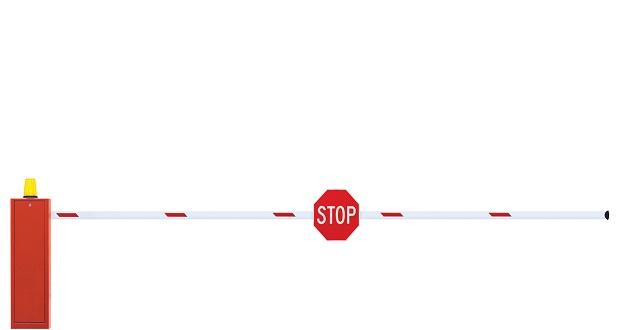
I am frustrated that we continue to need new legislation to mandate pay equality for women. It seems like an easy fix to me. We do, however, have a long history in the US of legislative attempts dating back to World War II.
During WWII, there were a large number of American women employed in various industries. The National War Labor Board urged employers in 1942 to voluntarily equalize pay rates for men and women in comparable jobs. Employers failed to heed this “voluntary” request, and when the war ended most women were pushed out of their new jobs to make room for returning veterans.
The first legislation that made it illegal to pay women less for comparable work based on sex was the Equal Pay Act which became effective June 11, 1964. Differences in seniority, merit, the quality or quantity of work, or other considerations could account for pay differentials, but gender alone could not be a factor. Over the next two decades the law was strengthened based on lawsuits. For example, in 1970 The U.S. Court of Appeals for the Third Circuit ruled that jobs need to be “substantially equal” but not “identical” to fall under the protection of the Equal Pay Act. An employer could no longer change the job titles of women workers in order to pay them less than men. In 1974 the courts ruled that employers could not pay women lower wages because of what they traditionally received under the “market rate.”
In 2009, President Obama signed the Lily Ledbetter Fair Pay Restoration Act, which allows victims of pay discrimination to file a complaint with the government against their employer within 180 days of their last paycheck. Previously, victims were only allowed 180 days from the date of the first unfair paycheck. This Act is named after a former employee of Goodyear who alleged that she was paid 15%-40% less than her male counterparts.
The Paycheck Fairness Act was passed by Congress in January of this year but still needs Senate approval. First introduced in 1997, this bill has been stalled for years. The purpose of the Paycheck Fairness Act is the strengthen the Equal Pay act of 1964 by eliminating some of the loopholes.
While the pay gap has narrowed since 1964 when women earned $0.59-$0.64 cents to every dollar a man earned, the uncontrolled gender pay gap, which takes the ratio of median earnings of all women and men, remains. In 2019, women still make only $0.79 for every dollar a man makes. The “uncontrolled” wage gap takes into account that women are less likely to hold high-level, high-paying jobs than men. There are structural barriers which keep women from advancing in the workplace– known as the opportunity gap.
The picture is worse for women of color. Women who identify as American Indian and Alaska Native, Black and Hispanic earn roughly $0.74 for every dollar a White man earns. The uncontrolled pay gap between White women and White men is $0.80 on the dollar. Put another way, according to EqualPayDay.org, the typical Black woman must work until August 2019 to be paid what the typical White man was paid at the end of December 2018. The typical Latina woman must work until November 2019 to be paid what the typical White man was paid at the end of December 2018.
Women are paid less in just about every industry, including the STEM field which is where a great deal of job growth will be. While it is better than it was even 5 years ago, women in science, technology, engineering and math still make about $0.90 to the dollar of their male counterparts. Studies conducted by the American Association of University Women (AAUW) continue to shed light on this problem. One of their studies found that the wage gap between men and women one year out of college with comparable qualifications is 7%.
There is one exception where there is no gender pay gap—for single, childless men and women, the gap is 0.0%. In other words, women pay a penalty for marrying and having children.
So, what are the practical solutions?
Audit and Fix. Keep Auditing and Keep Fixing.
Pay gaps are tangible, measurable and quite easily fixable which is why I am baffled that they still exist, and we still need more legislation to combat them. Take a page from Marc Benioff’s playbook, CEO of SalesForce. When confronted with an assertion that there was a gender pay gap, Benioff initially denied that it was possible. It was not until his company conducted an audit and the data clearly showed that such inequities existed, were widespread, and it would take about $3 million in corrective action.
Audit and Fix. Keep Auditing and Keep Fixing. Pay gaps are tangible, measurable and quite easily fixable which is why I am baffled that they still exist, and we still need more legislation to combat them. Share on XHe took the action. However, when the audit was repeated the following year, gender pay inequities still existed. It was discovered that it was because they had acquired a number of different companies with different pay practices. This finding made them realize that ongoing auditing and monitoring is necessary.
How can your organization facilitate an audit? In partnership with your HR and compensation teams, require each leader to complete a salary equity analysis that includes each employee in their organization. The analyses should include name, title, length of service, performance rating, and gender of course. Some organizations even include factors like education. The analysis should ascertain if women with comparable data are paid statistically significantly less than men and if so, why. If no objective reason can be given, fix it!
Audit and Fix Bonuses.
According to a study by ADP that examined different industries, on average, women’s bonuses were less than two-thirds the amount paid to men who had equivalent base pay, age and tenure. This disparity was observed across all age, salary and industry groups from moment of hire and persisted over the six years that the study was conducted. Ensure bonus and merit increase practices are part of your audit process.
Men…Honor Women’s Different Negotiation Styles and Check your Biases
I am really sick of hearing about women’s lack of negotiation ability. Women may negotiate differently than men because they have to, but to say that this is a deficit is wildly overexaggerated. Too many women may internalize this stereotype and not even try. Let’s stop perpetuating the myth. If you are a male leader and you are interviewing a woman who does not negotiate, support her by offering her the maximum that you would offer a man with the same qualifications. Some companies have fixed starting salaries with a policy of no negotiation. This type of practice can help to level the playing field.
Ask yourself if your biases get in the way of objective decisions about your pay recommendations for men and women. A married woman with a working husband needs less? A woman of color is not as capable because she lacks the elusive executive presence?
Ask yourself if your biases get in the way of objective decisions about pay. A married woman with a working husband needs less? A woman of color is not as capable because she lacks the elusive executive presence? Share on XWomen…Do your homework, and Hone your Negotiation Skills
Know the market rate for the role you are considering and know how much your male counterparts make. In other words, know your worth. Go into an offer conversation knowing that you will negotiate whatever salary is offered. And most importantly, hone your negotiation skills.
Know the market rate for the role you are considering and know how much your male counterparts make. In other words, know your worth. Share on XRecognize that studies show that women are forced to negotiate differently than men due to unconscious bias and age-old stereotypes about women’s and men’s styles. A man who is “aggressive” is seen as a go-getter while a woman with the exact same behavior may be perceived as “pushy.” Therefore, a woman has to prepare more and practice her approach. If she is established in the organization with credibility for outstanding work, it may be easier than for someone who is negotiating the salary at the time of offer. In either case, woman cannot appear needy or too overly confident.
Focusing on objective data such as accomplishments and market rates can lead to greater success. If a woman knows that her male peers make more than she does, this can be a good strategy, if handled well. For example, saying: I don’t think it is fair that Mark makes more than me because I am clearly more productive than he is” probably is not the best approach. A better approach might be something like: “In a casual conversation with Mark, he shared his salary with me. I know that we do the same type of job, so can you share why there is a difference in our pay?”
Support the Paycheck Fairness Act
Even though theoretically this legislation should not be needed, and it may have some unintended consequences, we should support anything that will eradicate pay inequities. Reach out to your elected officials. The bill has the following provisions:
The proposed legislation would strengthen the Equal Pay Act by:
- Prohibiting employers from asking job applicants about their salary history or relying on salary history to set compensation.
- Prohibiting employers from retaliating against workers who discuss their pay with co-workers.
- Requiring employers to show that pay disparities between men and women are job-related and consistent with business necessity.
- Providing plaintiffs who file EPA claims the same remedies that are available to plaintiffs who file race- or ethnicity-based wage-discrimination claims under Title VII of the Civil Rights Act of 1964.
- Making it easier for plaintiffs to participate in class-action lawsuits that challenge systemic pay discrimination.
- Establishing a negotiation-skills training program for women and girls.
While we have been making slow progress to eliminate gender pay inequities for over 50 years, it is not fast enough, but I contend that it is easy enough to do, so let’s just do it already.
While we have been making slow progress to eliminate gender pay inequities for over 50 years, it is not fast enough, but I contend that it is easy enough to do, so let’s just do it already. Share on X


![Global D&I Trends: LGBT[QIA]: Emptying the Closet](https://theinclusionsolution.me/wp-content/uploads/2016/10/clasped-hands-rainbow-flag-620x411.jpg)














